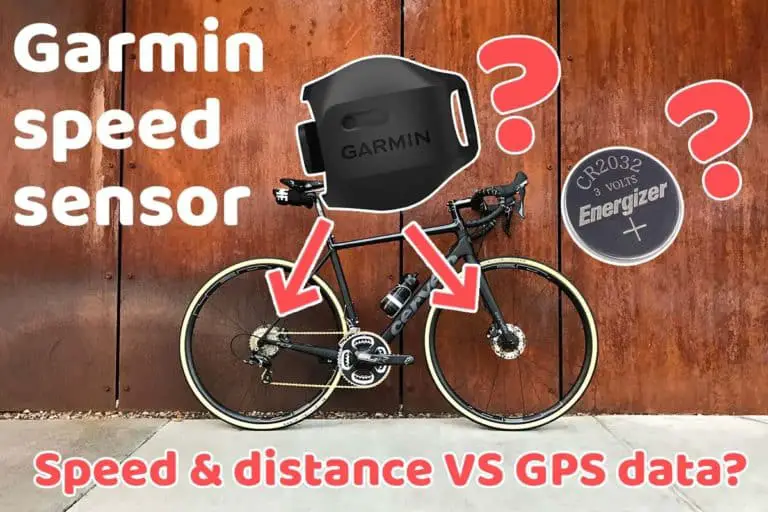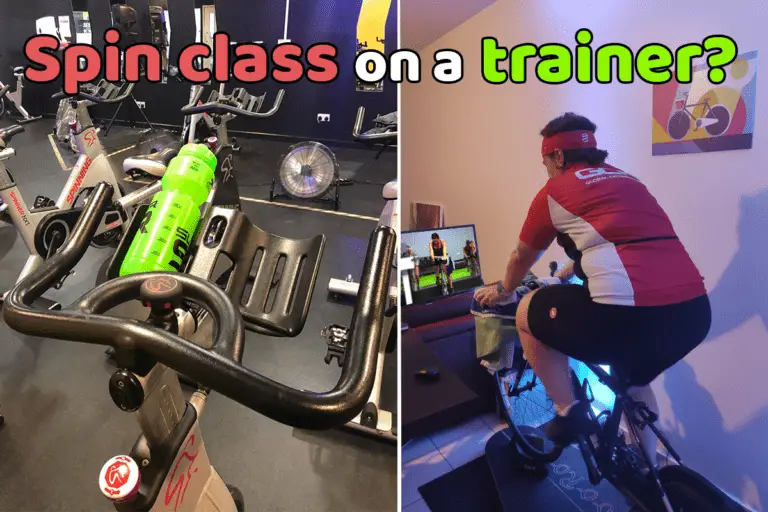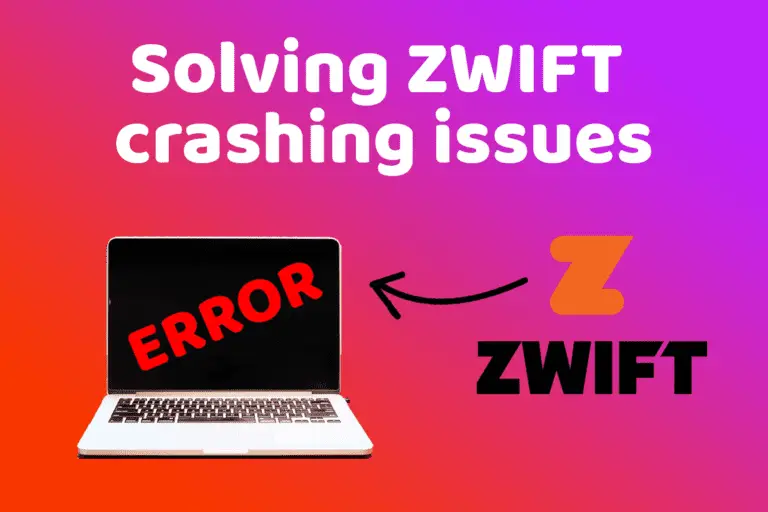How to reduce turbo trainer vibrations?
Share on:
If you live in an apartment building and you wish to hop on your turbo training early in the morning or late in the evening, you will probably be worried to bother your neighbors. Turbo trainers are more or less noisy depending on the one you buy but their vibrations can be a nightmare to your neighbors. How can you reduce the vibrations of a turbo trainer?
The best solution to reduce turbo trainer vibrations is by using foam or rubber mats. They will reduce both the noise and vibrations felt by your neighbors. You can also improve your setup using a rocker plate which will kill the vibrations while giving you added benefits to your training.
Riding indoors is really useful for your training. It gives your more opportunities to train, especially in winter when the weather is bad or putting your life at risk (like an early night, snow, ice, rain …). But it can cause you some disagreements with your neighbors due to the vibrations coming from your trainer. Let’s see how you can dampen these vibrations.
Why do turbo trainer generate vibrations?
All turbo trainers, whatever their type, are mechanical devices with some kind of mechanism that can adapt the resistance to the crank. These mechanisms all contain moving parts that tend to generate vibrations. With wheel-on trainers, the vibrations also come from the tire and roller which are not fully round.
Please note that a perfectly round tire does not exist, no need to search for one! 🙂
The vibrations will then be transferred through the floor on which your turbo trainer is set down. The type of flooring will make a big difference with the vibrations. For instance, my current apartment is made of wooden floors, but the tiles have a little play in some areas, which makes the vibrations from my turbo trainer very loud. But if I put my turbo trainer on a concrete floor (like in my previous apartment), you can barely notice them.
Ideally, if you can put your turbo trainer on the ground floor, or in the garage, vibrations will not be an issue for people around you.
Besides, the noise coming from the indoor trainer is not directly linked to the vibrations. So buying a “quiet” trainer is a really good option but don’t be surprised if your neighbors or family still complain about the “noise” when you train. It could be due to the vibrations rather than the actual noise of the trainer.
Main reasons to reduce the vibrations from your turbo trainer
- Keep good relationships with your neighbors and family
- Not damage your floor (especially if you are renting the place)
- Not damage your trainer – regular vibrations with time can loosen screws and damage joints.
Can you dampen turbo trainer vibrations with exercise mats?
We have seen that turbo trainers’ vibrations can become a nightmare when combined with some setups and types of floorings. An easy and cheap option to dampen the vibrations is to buy an exercise mat to place under the turbo trainer. But is this a good solution?
By exercise mats, I am referring to yoga mats and gym mats commonly bought to do yoga, strength training, crossfit, etc. They vary in thickness between 1/8 and 1/4 inches in general. There are generally made of PVC materials.
Exercise mats are not the best solution for dampening turbo trainer vibrations. They are too thin to really absorb the energy from the vibrations. And usually, they are not rigid enough to provide support to the turbo trainer, which helps to reduce the vibrations.
Also, exercises mats are usually very narrow. It might not always be large enough to accommodate the entire size of your trainer. If the trainer sits half on the floor/half on the mat, the purpose of the mat is canceled.
Can you dampen turbo trainer vibrations with foam mats?
Foam mats or tiles are generally found in home gyms. They’re not meant for heavy-duty which is why it is not the preferred option in commercial gyms. But foam mats are easy to find and cheap. Would it dampen vibrations from a turbo trainer?
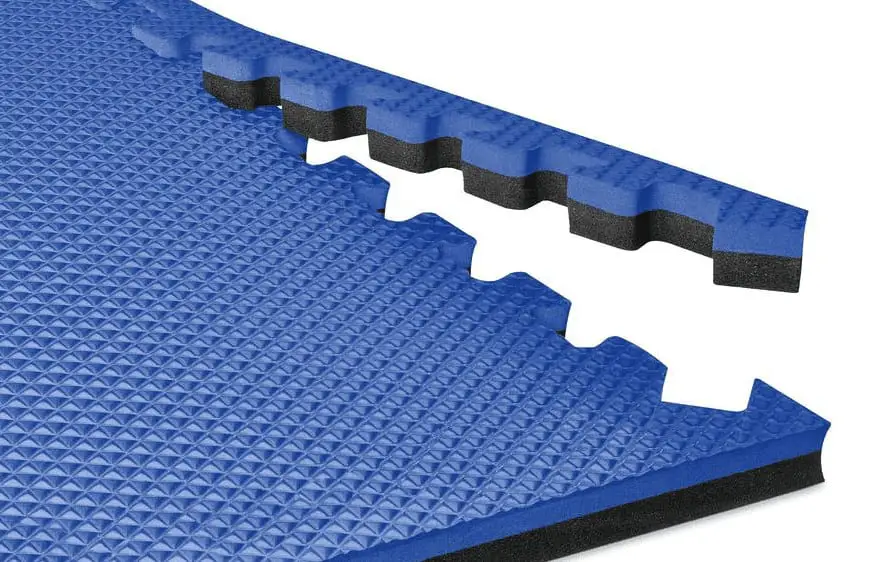
Foam tiles are the most common foam mats you can find. They are easy to use: usually, they are cut to allow interlocking each tile together and have a strong bonding between all tiles. Foam is a very flexible and shock absorbent material. It is perfect to absorb the vibrations, the thicker the better.
Foam tiles generally vary between 5/8 inch and 1.5 inch in thickness, which is much thicker than exercise mats and better for vibrations. The foam material is soft, so with time, it will take an imprint of the contact points of your indoor trainer, and with time it will reduce its vibration-damping capabilities.
Can you dampen turbo trainer vibrations with rubber mats?
Rubber mats are commonly used in commercial gyms, as they are great heavy-duty mats that absorb vibrations, protect the floor from damages, and do not get damaged easily. They are much harder than foam tiles which means that your turbo trainer won’t sink into the mat.
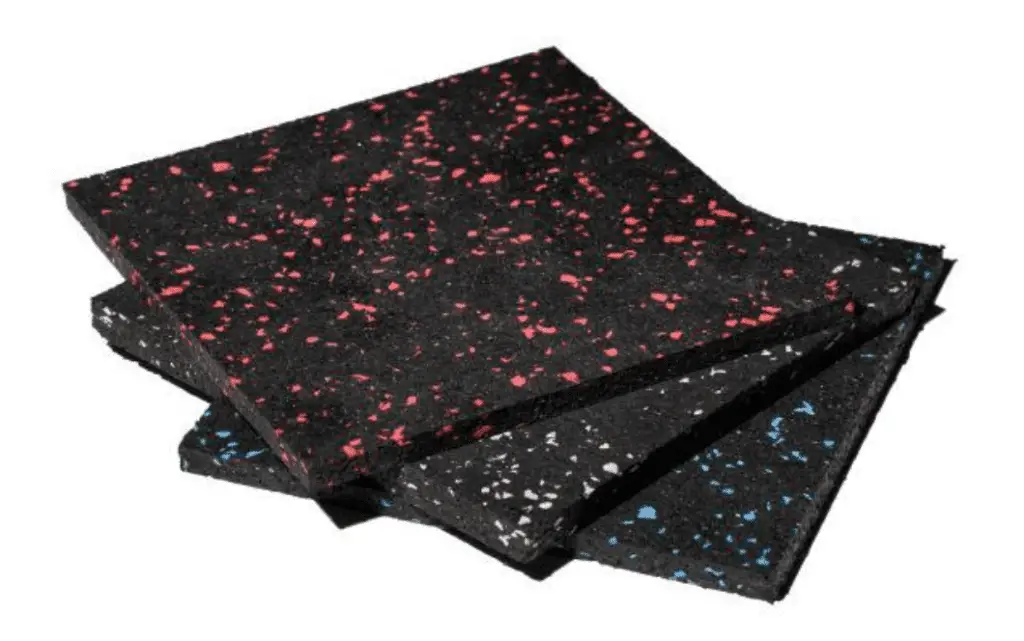
Rubber mats are much more expensive than foam mats. They come in thicknesses between 1/4 and 1/2 inches.
Are specific turbo trainer mats any good with vibrations?
You have probably seen when buying your turbo trainer that many brands sell their specific turbo trainer mat. What’s so special about them? Are they any different from an exercise mat?
You have probably heard about the Tacx mat, the Kickr mat, the Elite mat… These turbo trainer branded mats are designed to work well with your indoor trainer. But what are they made of and are they any good?
| Trainer Mat | Photo | Material | Thickness |
|---|---|---|---|
| Tacx rollable trainer mat |  | Foam | 6mm |
| Wahoo Kickr multi-purpose floor mat | 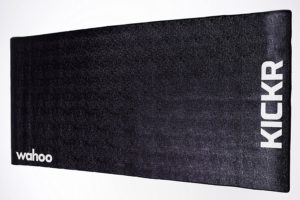 | Rubber | 5mm |
| Elite trainer mat | 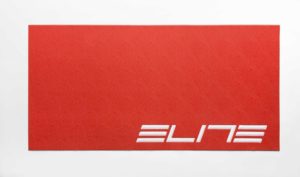 | Rubber | 5mm |
| Kinetic trainer mat | 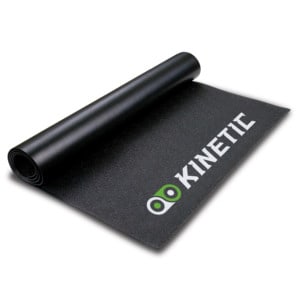 | PVC foam | 5mm |
| Saris (CycleOps) Bike training mat | 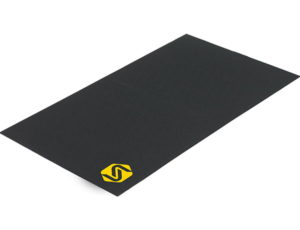 | Foam | 4mm |
I have personally used the Tacx rollable trainer mat for a year on a wooden floor and really enjoyed it. I didn’t have horrible vibrations coming from my turbo trainer but still with the type of flooring I had you could hear each lath squeaking. The addition of this mat had removed 90% of the vibration. It would still make some noise when I was standing up on the bike.
Now, I have moved to a completely different setup with the addition of a rocker plate on top of the mat.
Using a rocker plate to reduce turbo trainer vibrations
A rocker plate is primarily used to provide the indoor rider a better road feeling with side motion and in some cases fwd/aft motion. It is a great tool for indoor training and I won’t go too much into detail about it in this article.
But rocker plates are amazing to get rid of vibrations as your turbo trainer is not directly in contact with the floor!
I have been using a rocker plate for almost 2 years now and I can definitely assure you it is very efficient to dampen the vibrations from your turbo trainer! It is due to the way a rocker plate works and is built.
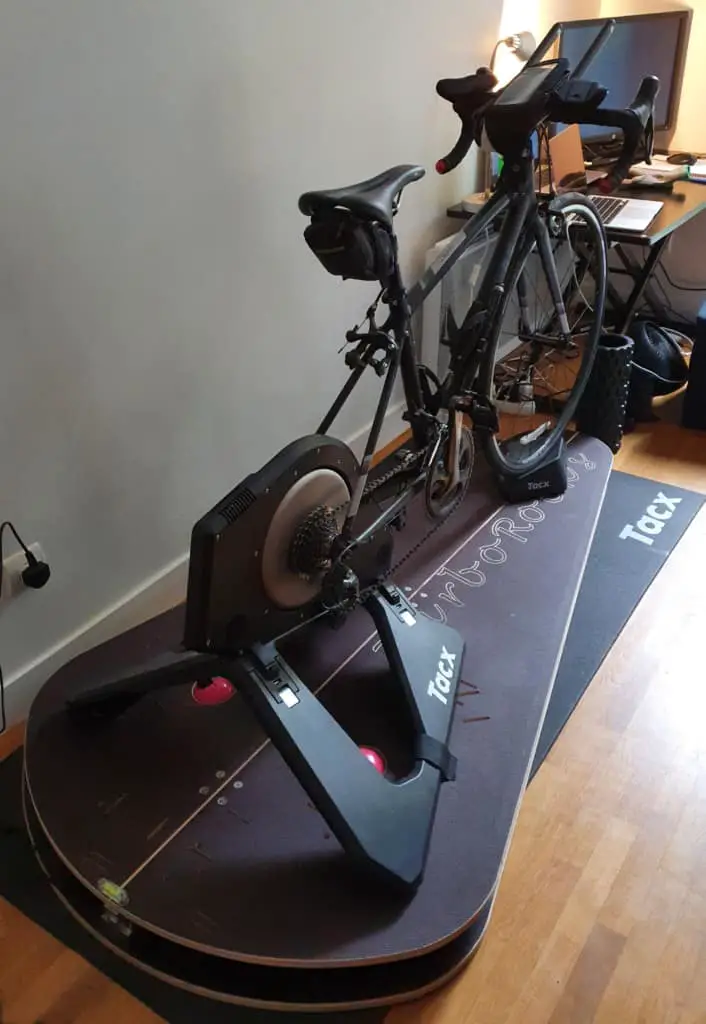
The rocker plate is made of strong and thick pieces of wood. One that rests on the floor, and another one (moving part) on which sits your trainer. In between, you will have a mechanism that dampens the vibrations and allow the rotations. In many cases, it consists of inflatable balls which confer damping and allow the trainer to pivot laterally.
Rocker plates are really good for several reasons. I have written an article about everything you need to know about rocker plates here.
Related questions
Can I use a turbo trainer upstairs?
Turbo trainers or bike trainers can be used upstairs if you use a mat to dampen the vibrations. Otherwise, the use of a turbo trainer can be very noisy and disturbing for the people living below.
Is a turbo trainer supposed to be loud?
All turbo trainers are noisy but they are not all equal. A magnetic wheel-on turbo trainer is generally louder than a fluid one. The loudest turbo trainer is the wind resistance type, but these are very rare since many manufacturers stopped their production.
What type of turbo trainer is quietest?
The quietest turbo trainers are the direct drive type. Then comes the fluid trainers which stay relatively quiet. The most common turbo trainers are the magnetic ones but they are the less quiet of the three.
Share on:

